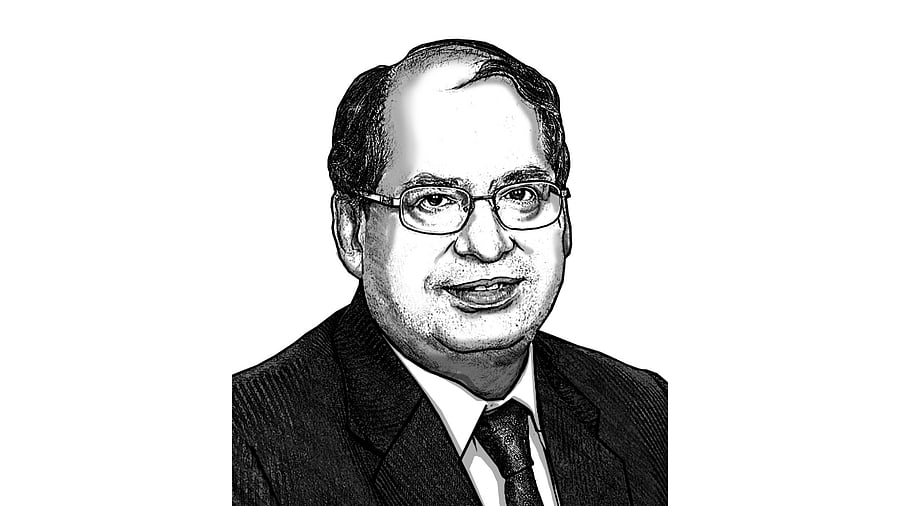
TCA Ranganathan The former chairman of the Export Import Bank of India is a banker with a theory of everything
We are living in an increasingly fragmented world marked by escalating trade wars, shifting supply chains, and regional kinetic conflicts, forcing a rethink of economic and strategic priorities. While the recent US bombing of the Iranian nuclear sites was much in the news, the Chinese action of holding the world to ransom by blocking exports of magnets, rare earth products, batteries etc. was, in a sense, no different a display of raw power. A new, manufacturing-led growth opportunity for India is opening up as countries start looking at alternative, reliable high-quality partners across domains – from defence to semiconductors. We are poised to take advantage.
The Nehruvian era also saw a major push for a public sector-led manufacturing revolution, as did liberalisation in the 1990s. Interestingly, neither succeeded, and quality could be the factor here. This is a silent hurdle we fail to overcome. Quality consciousness is not embedded across our systems. Our factories are usually price-competitive but often fail to be quality-competitive as they are content with local markets. In contrast, countries such as South Korea, Japan, and China climbed the manufacturing ladder by investing obsessively in quality, often at the cost of short-term profits. They understood that reputation in manufacturing is cumulative and global buyers prioritise predictable quality over price.
Our exporters complain about ‘non-tariff barriers’ but never discuss why the Chinese, Japanese, and Korean companies never encounter them. While a large number of our firms have ISO certification, these are typically pursued for tendering requirements rather than real operational discipline. Workers are often inadequately trained and the management doesn’t endorse a zero-defect culture. However, these are essentially flaws of a system that undervalues quality.
Illustratively, this week, an unqualified person was detected to have been merrily conducting cardiological surgeries in a hospital in the National Capital Region for a long time. An ‘L’ shaped ‘rail overbridge’ was creating consternation in Bhopal. In Karnataka, divergent rulings were issued by the Authority for Advance Ruling (AAR) which allowed the ONDC-affiliated Namma Yatri to operate without paying GST though Uber, Rapido, and Ola were made liable for the tax. These are not stray incidents. The sight of vehicles – even luxury cars – in New Delhi on the wrong side of the road or jumping lights or the frequency with which our roads collapse, our tunnels and underpasses develop leaks, the plethora of sub-standard medications in the market – all are symptomatic of this culture.
There are two sets of challenges. We need to recognise that the problem is our quality ecosystem. Our corporate taxation rates are amongst the lowest globally and determined business-friendly reforms have consistently been happening. Yet investment is not forthcoming, perhaps because of the ecosystem insufficiencies. Then, there is the quality hurdle. We need to recognise that quality is not obtained via inspections nor is it purely a number. It is a process that needs to be embedded across the value chain. A value chain is best controlled if accountability and authority are decentralised and embedded in different sections along its entire extent.
Let’s take the Indian Army which consistently delivers high-quality responses. The final management responsibility of a platoon, company or battalion, is solely with the specifically pre-identified commanding officer, regardless of criticality. The bandwidth, manpower or territory allotted is specific and limited but within it, accountability and authority are absolute. Most civilian commercial organisations such as commercial banks have also found that this structural discipline model with specific accountability points delivers value.
Deng’s reform in China conferred similar absolute authority and accountability to his mayors, who had to ensure that all requirements for modernity were always in place. However, post-independence, India experienced a reverse movement. In the colonial era, the authority and accountability of the field was absolute. This changed when a centralised decision-making model imitating the erstwhile Soviet Union was adopted.
At present, we have the largest number of ministries globally. Decision-making chains are excessively long and jurisdictions overlap. Territorial wars are common. No one is sure of who is responsible or of what. Accountability is decided by a post facto audit which is time-consuming. Buck passing is routine. So, our rules, procedures, and even laws are amongst the most complex and least understood. Quality suffers. We need to rethink our governance process. We need to decentralise accountability and authority in a consistent, systemic manner. Decision-making chains need to be truncated. Locally available absolute authority will enthuse entrepreneurs. The existence of absolute accountability will ensure effective control, and growth budgets will ensure maintenance of sensible balance.